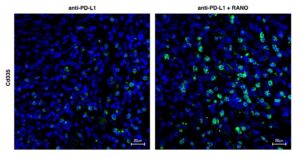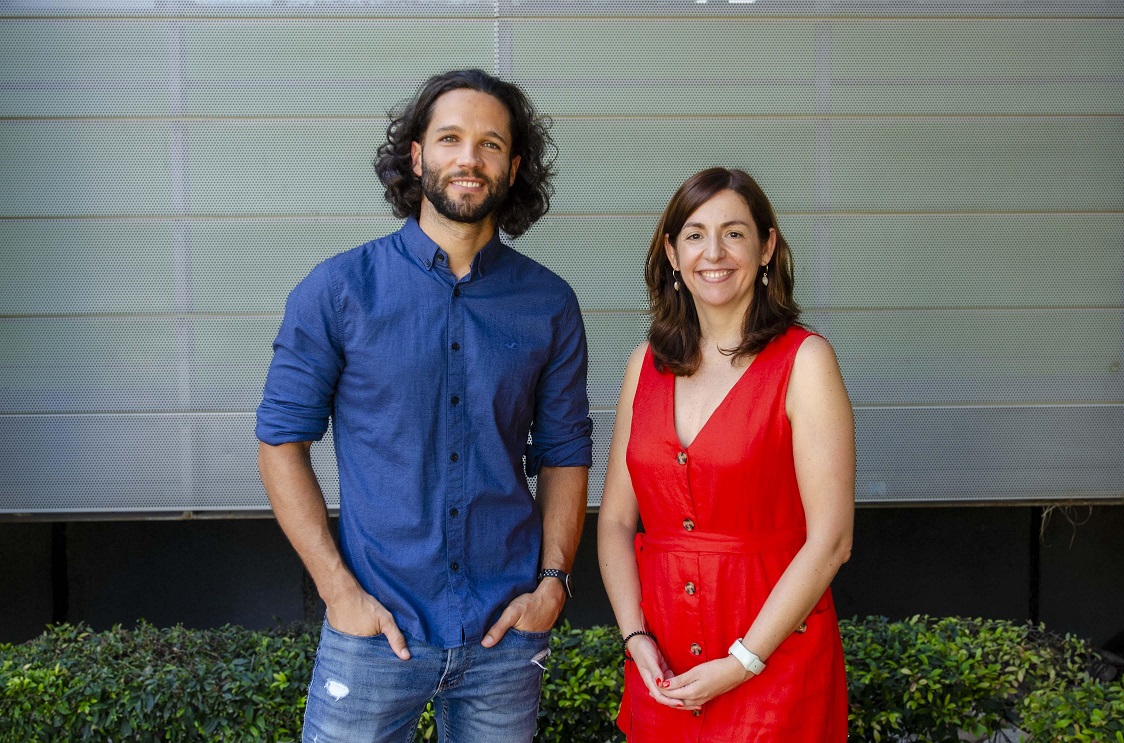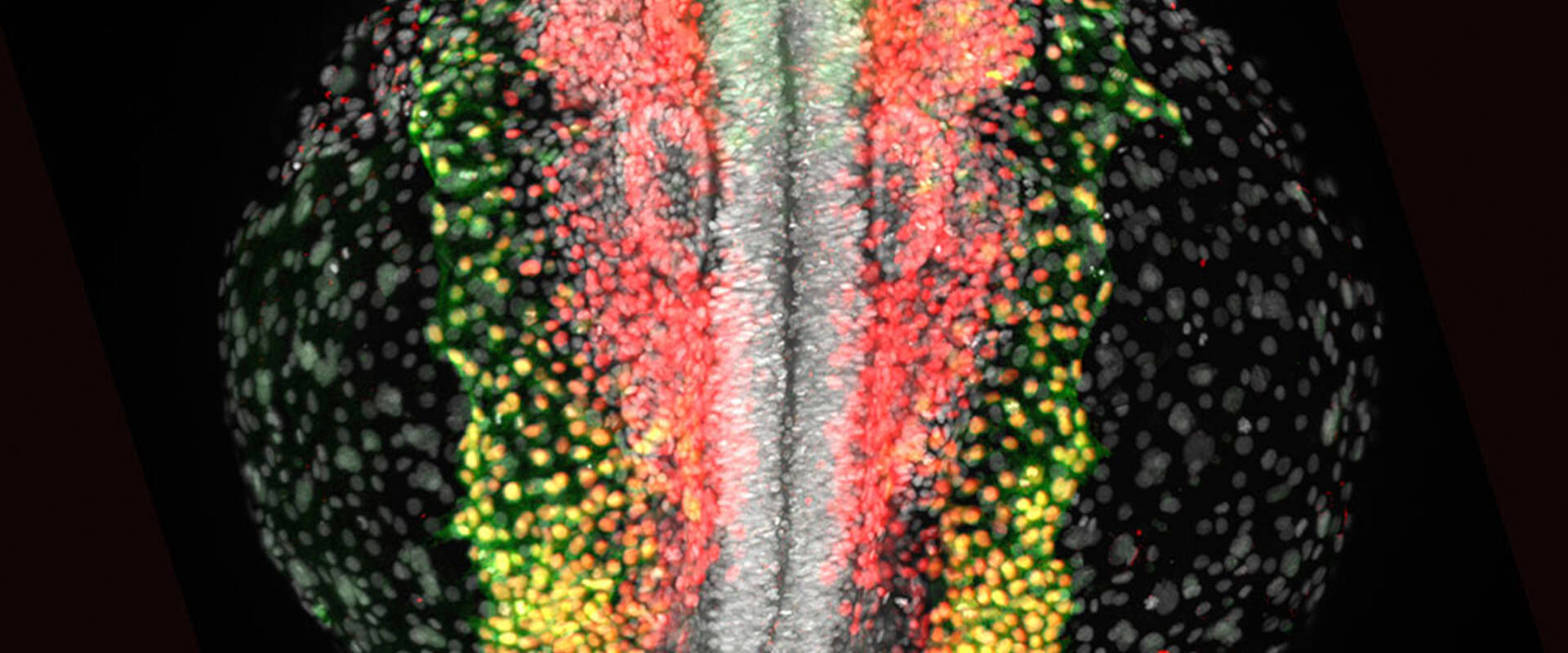Metabolic rewiring induced by ranolazine improves melanoma responses to targeted therapy and immunotherapy.
A study co-led by the Institute for Neurosciences CSIC-UMH proposes a therapeutic alternative to treat melanoma.
- The drug ranolazine, used to treat chronic angina pectoris, could improve response to anti-melanoma therapies.
- This is a multicenter investigation carried out by the Institute for Neurosciences CSIC-UMH, Navarrabiomed biomedical research center, and IRB Barcelona.
(Photo: Francisco Javier Rodríguez-Baena y Berta Sánchez-Laorden)
The prestigious journal Nature Metabolism has published the results of a study in
mice that determined that ranolazine, a drug that is currently administered to
patients to treat heart conditions, delays the appearance of resistance to
melanoma treatments, by blocking fatty acids metabolism. This research has
been co-led by the Institute for Neurosciences, a joint center of the Spanish
Research Council (CSIC) and the Miguel Hernández University (UMH) of Elche,
together with the biomedical research centers Navarrabiomed and IRB
Barcelona.
Melanoma is the most aggressive type of skin cancer and, although it only
accounts for 10% of skin cancer cases, it is responsible for 90% of deaths
associated with skin tumours. Thanks to the development of targeted therapies
and immunotherapies, the clinical management of patients affected with this type
of cancer has improved, however, these therapies still have limitations because
50% of patients do not respond adequately and even develop resistance.
The evidence suggests that this resistance could be linked to metabolic
reprogramming in cancer cells that is associated to changes in the way in which
cells process and use nutrients. This research demonstrates that fatty acid
metabolism plays an important role in the development of resistance to
melanoma treatments.
Researchers have confirmed that increased fatty acid oxidation occurs during
long-term treatment with BRAF inhibitors, one of the key genes in tumour
progression, contributing to therapy resistance.
Ranolazine increases the efficacy of targeted therapy against melanoma
because it can target fatty acid oxidation. In addition, the application of this drug
promotes that melanoma cells become more visible to the immune system,improving the response to immunotherapies and increasing the ability of lymphocytes to control tumour growth.

Treatment with ranolazine increases the number of antitumour lymphocytes (green) that infiltrate the tumour(b lue) and favour the action of immunotherapy
Researchers at the laboratory led by Berta Sánchez-Laorden, belonging to the
Cell Plasticity in Development and Disease group at the Institute for
Neurosciences, have developed immunotherapy experiments in mice and have
carried out the study of immune cells in the tumour microenvironment. Francisco
Javier Rodríguez Baena, first co-author of the article, indicates “It is necessary to
study in depth not only the tumour cells but also those from the environment that
surrounds them. This microenvironment is key to therapeutic resistance. This
comprehensive approach is revolutionizing therapies and improving the
treatment of melanoma and other cancers”.
The combination of current therapies with ranolazine could offer a therapeutic
alternative for these patients, improving their clinical response Along these lines,
Sánchez Laorden indicates “Immunotherapy has established itself as a
fundamental therapeutic strategy in melanoma and other types of cancer. This
work shows the beneficial impact of the combination of ranolazine with
immunotherapy in preclinical models of melanoma, which supports its possible
application in patients”
The Navarrabiomed Cancer Signaling Unit, directed by Imanol Arozarena
Martinicorena, has coordinated the course of the research and has been in charge of carrying out the experiments related to resistance to targeted therapies and the study of how ranolazine affects the immunogenicity of melanoma cells.
In addition, the IRB Barcelona Stem Cells and Cancer research group, led by Salvador Aznar-Benitah, has carried out individual cell RNA sequencing analyses, which have made it possible to find out in detail the effect of the drug on the state metabolism of tumour cells.
This study, which has been made possible thanks to funding granted by the
Ministry of Science and Innovation, the Carlos III Health Institute, the Government
of Navarra, the Spanish Multidisciplinary Melanoma Group (GEM), and the
Melanoma Research Alliance, is a clear example of how basic research can
contribute a lot to the repositioning of drugs, which makes it possible to
significantly shorten the deadlines for providing answers to patients suffering from
diseases as prevalent as cancer.


 Español
Español
